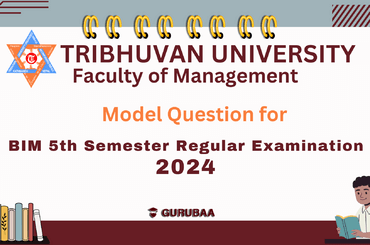BLOG
When it comes to tourism, Nepal has always been a jewel in the crown of adventure seekers and nature enthusiasts. The country’s captivating landscapes, including the mighty Himalayas, have been the backdrop for countless memorable journeys. But have you ever wondered how this mountain tourism is developed and managed? That’s where BMTM (Bachelor of Mountain Tourism Management) comes into play.
BMTM Program:
| BMTM: | It’s a program that provides a comprehensive understanding of tourism and mountain tourism development, its economic significance, and the essential components for its growth offered by Tribhuvan University affiliated colleges. |
|---|---|
| Course Duration: | BMTM spans four years, divided into eight semesters. During this time, students gain the knowledge and practical experience required to become experts in the field of mountain tourism. |
| Objectives: | The primary objective of this course is to make a significant contribution to the field of mountain tourism. It offers a comprehensive understanding of tourism, with a specific focus on mountain tourism and its growth. |
| Teaching Methods: | The program blends theory with real-world experience through field visits, expert lectures, and seminars, enabling students to grasp the practical nuances of mountain tourism. |
| Comprehensive Curriculum: | The BMTM syllabus consists of diverse subjects, from Sustainable Mountain Tourism Management to Disaster Management in Mountain Regions, alongside courses in social sciences, management, analytics, communication, various languages (Chinese, Japanese, Korean, French), and IT. |
| Scope and Collaboration: | BMTM offers a wide scope in Nepal, with valuable collaborations established with prominent organizations in Pokhara, including the Trekking Agencies Association of Nepal (TAAN), hotels, trekking agencies, and banks. |
| Career Opportunities: | Graduates can explore job roles as tour managers, tourism promoters/marketers, reservation officers/agents, ticketing officers, event managers, travel agency staff, travel and tourism consultants, tour operators, entrepreneurs, and more. |
Eligibility for BMTM:

If you’ve completed your 10+2 or equivalent examinations with a second division (scoring 45% and above) or a 1.8 CGPA, you’re eligible for the BMTM program. Now, let’s look into the curriculum and what each semester offers:
Curricular Structure:

| Semester | Courses | Credit Hours |
|---|---|---|
| 1st | Fundamentals of Mountain Tourism Development | 3 |
| Basic Mathematics | 3 | |
| English –I | 3 | |
| Principles of Management | 3 | |
| Computer and IT Fundamentals | 3 | |
| 2nd | Leisure and Recreation Tourism | 3 |
| Tours, Travel, and Trekking Management | 3 | |
| Human Resource Management | 3 | |
| Tourism Economics | 3 | |
| Geographical Structure of Mountain | 3 | |
| 3rd | Communication for Tourism | 3 |
| Mountain Tourism Development and Planning | 3 | |
| Hospitality and Public Relations | 3 | |
| Nepali Society and Politics | 3 | |
| Tourism Accounting | 3 | |
| 4th | Sustainable Mountain Tourism Management | 3 |
| Mountain Tourism Entrepreneurship | 3 | |
| Fundamentals of Financial Management | 3 | |
| Quantitative Techniques | 3 | |
| Anthropology of Mountain Tourism | 3 | |
| 5th | Institutional Growth in Mountain Tourism | 3 |
| Tourism Marketing | 3 | |
| Research Methods | 3 | |
| Information System for Tourism Management | 3 | |
| Tourism Laws and Policies in Nepal | 3 | |
| 6th | Operation Management for Mountain Tourism | 3 |
| Disaster Management in Mountain Region | 3 | |
| E-Tourism | 3 | |
| Elective I: Agriculture and Rural Tourism | 3 | |
| Field Visits and Project Work –I | 4 | |
| 7th | Strategic Management in Mountain Tourism | 3 |
| Eco-tourism | 3 | |
| Climate Change and Adaptation | 3 | |
| Elective II: Pilgrimage and Heritage Tourism | 3 | |
| Field Visits and Project Work –II | 3 | |
| 8th | Internship (15 Weeks of Challenging Work in Organizations) | 3 |
| Internship Report (Writing and Presentation) | 6 |
Admission Criteria:

| Eligibility | Students with a minimum of 45 percent marks in their intermediate level or equivalent, or a minimum CGPA of 1.8, can apply. |
|---|---|
| Entrance Test | Applicants must pass the CMAT (Central Management Aptitude Test) conducted by the Faculty of Management, Tribhuvan University. The test examines the verbal ability, quantitative ability, logical reasoning, and general awareness of a student. |
| Selection Process | Admission is based on a merit list, which considers 60 percent of CMAT test scores, 30 percent of marks/grades secured in the plus-two or equivalent level, and 10 percent from the interview. |
Who can join BMTM?

Students looking to enroll in the BMTM program should meet the following things:
- Regular Attendance and Active Participation: Dedication and active involvement in class activities throughout the semester.
- Research and Presentation Skills: The course involves book and literature surveys, paper writing, seminar presentations, and projects like field visits.
- Diverse Teaching Methods: BMTM employs various teaching modes, including lectures, assignments, case references, ventures, and panel discussions.
Upon completion of the course, students will have a strong knowledge of the fundamental concepts related to mountain tourism, as well as the positive and negative effects it can have, along with their consequences. Additionally, they will gain insights into the immense potential that mountain tourism holds in Nepal.
So, Whether you dream of becoming trekking leaders through the Himalayas, managing a luxury eco-lodge, or developing sustainable tourism policies, a BMTM degree can help you achieve your goals.
If you’re looking for a career that is both rewarding and challenging, a BMTM degree may be the perfect choice for you.
Also Read: Management Courses of Nepal

